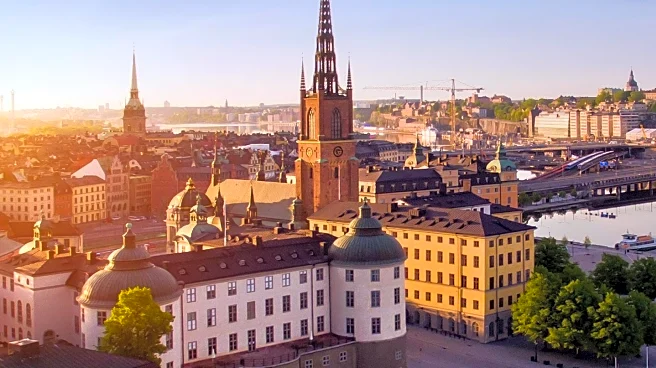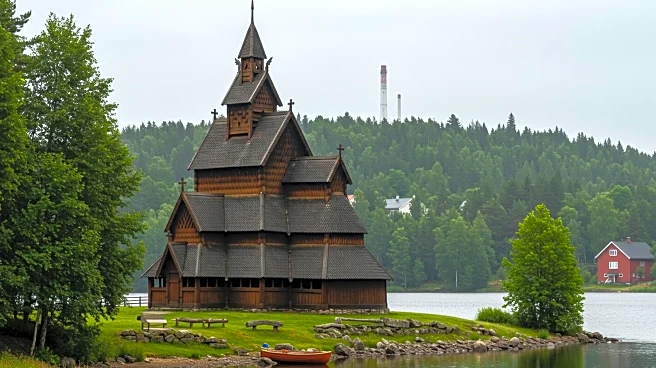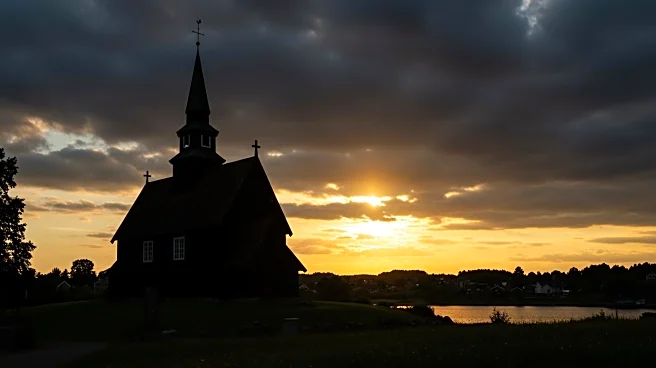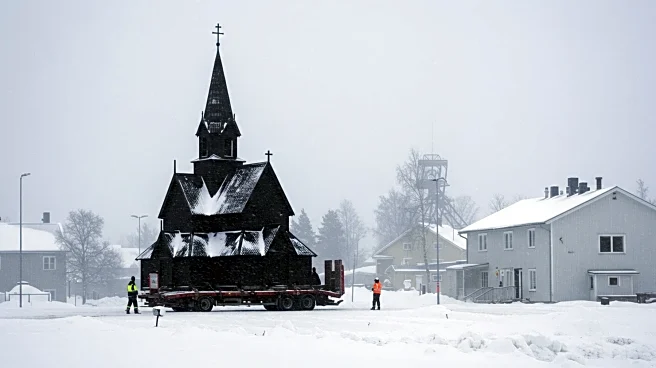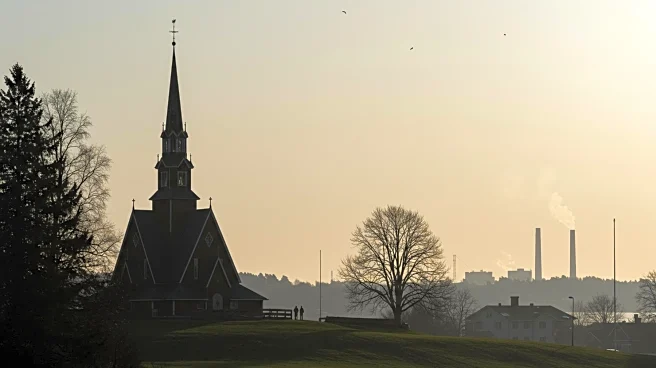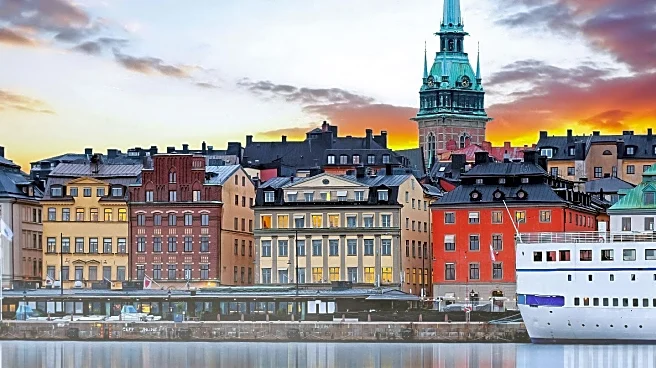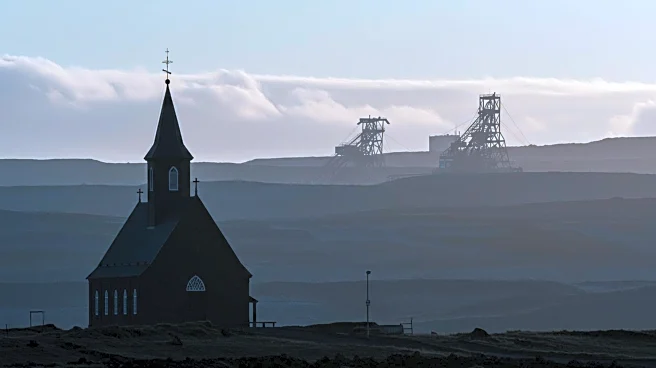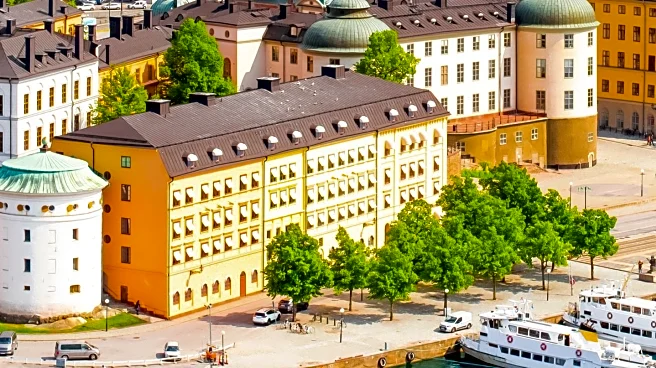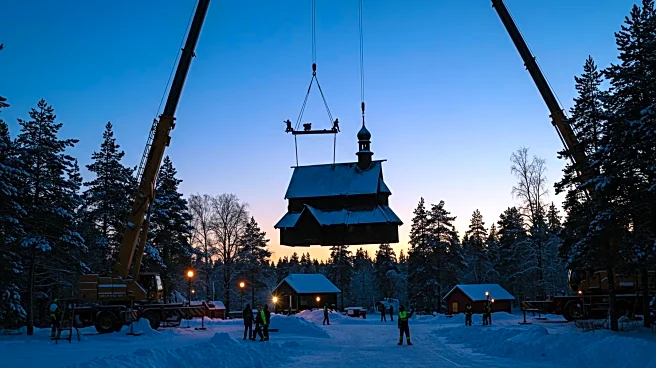What's Happening?
Sweden has relocated the historic Kiruna Kyrka, a Lutheran church, to protect it from the expansion of Europe's largest underground iron ore mine. The church, weighing 672 tonnes, was moved 5 kilometers to ensure its preservation as part of a broader urban transformation project led by the state-owned mining company LKAB. This project involves relocating 23 cultural landmarks and is expected to conclude by 2035. The relocation, costing over 500 million kronor, was witnessed by thousands, including Sweden's King Carl XVI Gustaf. While the church's move is celebrated, it has sparked controversy among the Sámi community, who argue that their reindeer herding lands and culture are threatened by the mining activities.
Why It's Important?
The relocation of Kiruna Kyrka underscores the tension between industrial expansion and cultural preservation. While the church's move is a feat of engineering and a symbol of Swedish heritage, it highlights the broader impact of mining on Indigenous communities and the environment. The Sámi community's concerns about land rights and cultural preservation reflect ongoing challenges in balancing economic development with social and environmental responsibilities. This situation raises questions about the ethical implications of prioritizing industrial growth over Indigenous rights and environmental conservation.
What's Next?
The church is expected to reopen at its new site by the end of 2026, serving as a preserved landmark and a reminder of the changes brought by industrial expansion. The mining company LKAB will continue its urban transformation project, which includes compensating affected residents. The Sámi community may seek further dialogue and action to address the impact on their lands and culture. As the project progresses, stakeholders will need to navigate the complexities of cultural preservation, environmental protection, and economic interests.
Beyond the Headlines
The relocation of Kiruna Kyrka highlights the broader issue of cultural heritage preservation in the face of industrial expansion. It raises ethical questions about the rights of Indigenous communities and the long-term impact of mining on biodiversity and the environment. The Sámi community's concerns reflect a global challenge of balancing development with cultural and environmental sustainability. This situation may prompt discussions on policy reforms and the need for more inclusive decision-making processes that consider the voices of affected communities.
